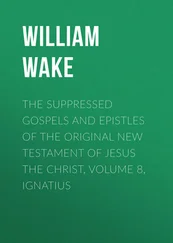Ignatius Donnelly - Antediluvian world
Здесь есть возможность читать онлайн «Ignatius Donnelly - Antediluvian world» весь текст электронной книги совершенно бесплатно (целиком полную версию без сокращений). В некоторых случаях можно слушать аудио, скачать через торрент в формате fb2 и присутствует краткое содержание. Жанр: Старинная литература, на русском языке. Описание произведения, (предисловие) а так же отзывы посетителей доступны на портале библиотеки ЛибКат.
- Название:Antediluvian world
- Автор:
- Жанр:
- Год:неизвестен
- ISBN:нет данных
- Рейтинг книги:5 / 5. Голосов: 1
-
Избранное:Добавить в избранное
- Отзывы:
-
Ваша оценка:
- 100
- 1
- 2
- 3
- 4
- 5
Antediluvian world: краткое содержание, описание и аннотация
Предлагаем к чтению аннотацию, описание, краткое содержание или предисловие (зависит от того, что написал сам автор книги «Antediluvian world»). Если вы не нашли необходимую информацию о книге — напишите в комментариях, мы постараемся отыскать её.
Antediluvian world — читать онлайн бесплатно полную книгу (весь текст) целиком
Ниже представлен текст книги, разбитый по страницам. Система сохранения места последней прочитанной страницы, позволяет с удобством читать онлайн бесплатно книгу «Antediluvian world», без необходимости каждый раз заново искать на чём Вы остановились. Поставьте закладку, и сможете в любой момент перейти на страницу, на которой закончили чтение.
Интервал:
Закладка:
And in Plato’s account of Atlantis we have another description of the Garden of Eden and the Golden Age of the world: “Also, whatever fragrant things there are in the earth, whether roots, or herbage, or woods, or distilling drops of flowers and fruits, grew and thrived in that land; and again the cultivated fruits of the earth, both the edible fruits and other species of food which we call by the name of legumes, and the fruits having a hard rind, affording drinks and meats and ointments . . . all these that sacred island, lying beneath the sun, brought forth in abundance. . . . For many generations, as long as the divine nature lasted in them, they were obedient to the laws, and well affectioned toward the gods, who were their kinsmen; for they possessed true and in every way great spirits, practising gentleness and wisdom in the various chances of life, and in their intercourse with one another. They despised everything but virtue, not caring for their present state of life, and thinking lightly of the possession of gold and other property, which seemed only a burden to them; neither were they intoxicated by luxury; nor did wealth deprive them of their self-control; but they were sober, and saw clearly that all these goods were increased by virtuous friendship with one another, and that by excessive zeal for them, and honor of them, the good of them is lost, and friendship perishes with them.”
All this cannot be a mere coincidence; it points to a common tradition of a veritable land, where four rivers flowed down in opposite directions from a central mountain-peak. And these four rivers, flowing to the north, south, east, and west, constitute the origin of that sign of the Cross which we have seen meeting us at every point among the races who were either descended from the people of Atlantis, or who, by commerce and colonization, received their opinions and civilization from them.
Let us look at the question of the identity of the Garden of Eden with Atlantis from another point of view:
If the alphabet of the Phoenicians is kindred with the Maya alphabet, as I think is clear, then the Phoenicians were of the same race, or of some race with which the Mayas were connected; in other words, they were from Atlantis.
Now we know that the Phoenicians and Hebrews were of the same stock, used the same alphabet, and spoke almost precisely the same language.
The Phoenicians preserved traditions, which have come down to us in the writings, of Sanchoniathon, of all the great essential inventions or discoveries which underlie civilization. The first two human beings, they tell us, were Protogonos and Aion (Adam and ‘Havath), who produce Genos and Genea (Qen and Qenath), from whom again are descended three brothers, named Phos, Phur, and Phlox (Light, Fire, and Flame), because they “have discovered how to produce fire by the friction of two pieces of wood, and have taught the use of this element.” In another fragment, at the origin of the human race we see in succession the fraternal couples of Autochthon and Technites (Adam and Quen—Cain?), inventors of the manufacture of bricks; Agros and Agrotes (Sade and Ced), fathers of the agriculturists and hunters; then Amynos and Magos, “who taught to dwell in villages and rear flocks.”
The connection between these Atlantean traditions and the Bible record is shown in many things. For instance, “the Greek text, in expressing the invention of Amynos, uses the words kw’mas kai` poi’mnas, which are precisely the same as the terms ohel umiqneh, which the Bible uses in speaking of the dwellings of the descendants of Jabal (Gen., chap. iv., v. 20). In like manner Lamech, both in the signification of his name and also iv the savage character attributed to him by the legend attached to his memory, is a true synonyme of Agrotes.”
“And the title of A?lh~tai, given to Agros and Agrotes in the Greek of the Phoenician history, fits in wonderfully with the physiognomy of the race of the Cainites in the Bible narrative, whether we take a?lh~tai simply as a Hellenized transcription of the Semitic Elim, ‘the strong, the mighty,’ or whether we take it in its Greek acceptation, ‘the wanderers;’ for such is the destiny of Cain and his race according to the very terms of the condemnation which was inflicted upon him after his crime (Gen. iv., 14), and this is what is signified by the name of his grandson ‘Yirad. Only, in Sanchoniathon the genealogy does not end with Amynos and Magos, as that of the Cainites in the Bible does with the three sons of Lamech. These two personages are succeeded by Misor and Sydyk, ‘the released and the just,’ as Sanchoniathon translates them, but rather the ‘upright and the just’ (Mishor and Cuedueq), ‘who invent the use of salt.’ To Misor is born Taautos (Taut), to whom we owe letters; and to Sydyk the Cabiri or Corybantes, the institutors of navigation.” (Lenormant, “Genealogies between Adam and the Deluge.”
Contemporary Review, April, 1880.)
We have, also, the fact that the Phoenician name for their goddess Astynome (Ashtar No’ema), whom the Greeks called Nemaun, was the same as the name of the sister of the three sons of Lamech, as given in Genesis—Na’emah, or Na’amah.
If, then, the original seat of the Hebrews and Phoenicians was the Garden of Eden, to the west of Europe, and if the Phoenicians are shown to be connected, through their alphabets, with the Central Americans, who looked to an island in the sea, to the eastward, as their starting-point, the conclusion becomes irresistible that Atlantis and the Garden of Eden were one and the same.
The Pyramid.—Not only are the Cross and the Garden of Eden identified with Atlantis, but in Atlantis, the habitation of the gods, we find the original model of all those pyramids which extend from India to Peru.
This singular architectural construction dates back far beyond the birth of history. In the Puranas of the Hindoos we read of pyramids long anterior in time to any which have survived to our day. Cheops was preceded by a countless host of similar erections which have long since mouldered into ruins.
If the reader will turn to page 104 of this work he will see, in the midst of the picture of Aztlan, the starting-point of the Aztecs, according to the Botturini pictured writing, a pyramid with worshippers kneeling before it.
Fifty years ago Mr. Faber, in his “Origin of Pagan Idolatry,” placed artificial tumuli, pyramids, and pagodas in the same category, conceiving that all were transcripts of the holy mountain which was generally supposed to have stood in the centre of Eden; or, rather, as intimated in more than one place by the Psalmist, the garden itself was situated on an eminence. (Psalms, chap. iii., v. 4, and chap. lxviii., vs. 15, 16, 18.)
The pyramid is one of the marvellous features of that problem which confronts us everywhere, and which is insoluble without Atlantis.
The Arabian traditions linked the pyramid with the Flood. In a manuscript preserved in the Bodleian Library, and translated by Dr.
Sprenger, Abou Balkhi says:
“The wise men, previous to the Flood, foreseeing an impending Judgment from heaven, either by submersion or fire, which would destroy every created thing, built upon the tops of the mountains in Upper Egypt many pyramids of stone, in order to have some refuge against the approaching calamity. Two of these buildings exceeded the rest in height, being four hundred cubits, high and as many broad and as many long. They were built with large blocks of marble, and they were so well put together that the joints were scarcely perceptible. Upon the exterior of the building every charm and wonder of physic was inscribed.”
This tradition locates these monster structures upon the mountains of Upper Egypt, but there are no buildings of such dimensions to be found anywhere in Egypt. Is it not probable that we have here another reference to the great record preserved in the land of the Deluge? Were not the pyramids of Egypt and America imitations of similar structures in Atlantis? Might not the building of such a gigantic edifice have given rise to the legends existing on both continents in regard to a Tower of Babel?
Читать дальшеИнтервал:
Закладка:
Похожие книги на «Antediluvian world»
Представляем Вашему вниманию похожие книги на «Antediluvian world» списком для выбора. Мы отобрали схожую по названию и смыслу литературу в надежде предоставить читателям больше вариантов отыскать новые, интересные, ещё непрочитанные произведения.
Обсуждение, отзывы о книге «Antediluvian world» и просто собственные мнения читателей. Оставьте ваши комментарии, напишите, что Вы думаете о произведении, его смысле или главных героях. Укажите что конкретно понравилось, а что нет, и почему Вы так считаете.












